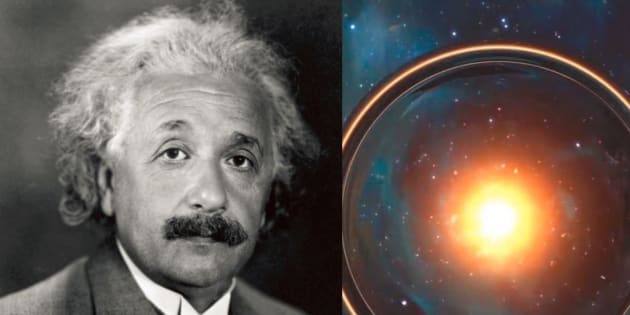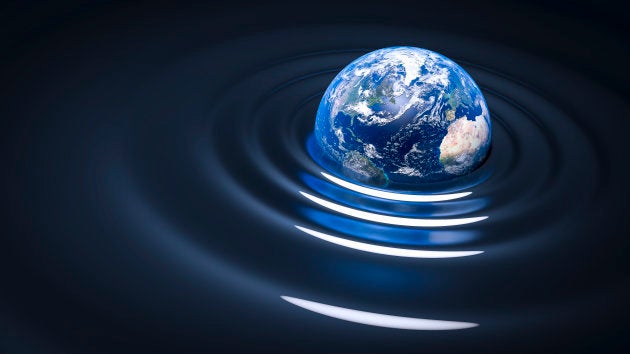
On Tuesday, news broke that NASA scientists had detected the world's first gravitational waves produced by a pair of neutron stars that merged over 130 million light-years away.
An Australian group, lead by Associate Professor Tara Murphy from University of Sydney said that the collision was the first to produce light and radio waves, as well as gravitational waves.
While this is all very exciting and impressive, without knowing what a gravitational wave is, it can be hard to appreciate the significance of this discovery.
What Exactly Is A Gravitational Wave?
Gravitational waves are energy ripples that are created by events in the universe like two neutron stars or two black holes merging. These waves have the ability to affect the speed of light and therefore, time and space. Scientists also think they can cause subtle changes in planet orbit.
"You might have seen the pulp scientist Brian Cox talking about gravity and how it is warping space. They do the weight-on-a-rubber-sheet and you see the sheet getting distorted and that is basically how gravity behaves," PhD candidate Dougal Dobie told HuffPost Australia.
"Gravitational waves are what happens if you take that distortion and move it and so you see these huge merger events whether they are neutron stars or black holes and they distort gravity enough that it creates ripples in space time and that is what has been detected."
When Were Gravitational Waves Discovered?
The Laser Interferometer Gravitational-Wave Observatory (LIGO) in the U.S. state of Louisiana first detected gravitational waves in 2015.
Using advanced detectors, the team observed gravitational waves from the collision of two black holes, and later two more.
The team behind the discovery, including Rainer Wess, Barry Barish and Kip Thorne, was awarded the Nobel Prize in Physics in 2017.
What Is A Neutron Star?
According to Dobie, the name 'neutron star' can also be a little confusing.
"So, neutron stars are incredibly dense -- the name is a little misleading -- they are more like black holes than stars," Dobie explained.
"So to put it into perspective ... if you took the sun, a neutron star is about the mass of the sun, a little bit more, but shrunk down into sphere that is about 10-20 kilometres in diameter -- so really really compact.
"So the energy of the explosion [recently detected] is much, much more energy than the sun has omitted in its entire lifetime. It's huge amounts of energy."

Why Is This Discovery Important?
"It is basically just confirming that Einstein was correct and he does seem to be right most of the time," Dobie said.
Albert Einstein predicted that these gravitational waves existed back in 1916 on the basis of his theory of general relativity. He said that gravitational waves transport energy as gravitational radiation and that they could be similar to electromagnetic radiation.
"So it is pretty big to be able to have another test of general relativity and that does seem to be how the universe tends to work for the most part," Dobie said.
"This detection is particularly exciting because it is the first detection of two neutron stars coming together. In the past we have detected black holes merging together but Einstein and most of the LIGO team expected that neutron stars would be the first gravitational wave of detection that we make and we might find the black holes later."
